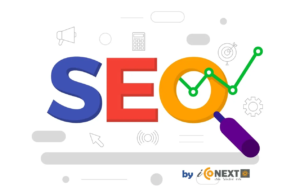A customer focused website is designed around your customers’ needs, wants, and preferences. This creates a wonderful user experience and leads to long-term relationships.

Customer-centric websites provide an open platform for customers to share their experiences, feedback, and suggestions. This can be done through the use of a customer feedback page or by including links to social media platforms. Dive deeper into Customer Focused Web Design by reading further.
The user-centered design (UCD) process focuses on understanding users’ needs and wants and creating a product that meets those needs. It uses research methods like interviews, surveys, and observations to identify users’ pain points and what they want from a product. The UCD process also involves creating and testing prototypes. This iterative approach helps designers improve their designs based on user feedback.
UCD strategies help businesses create better user experiences and increase conversions. However, implementing these strategies requires an understanding of how to balance user needs with business objectives. It also requires overcoming resistance to UCD from stakeholders within an organization. Overcoming this resistance involves educating stakeholders on the benefits of UCD, demonstrating its value through case studies and pilot projects, and training stakeholders to support a user-centered culture.
A well-executed UCD process enables businesses to produce better products that meet customer’s needs and generate more revenue. In addition, UCD saves on development costs by catching errors early in the design process. A company that overlooks a critical issue post-launch may need to invest significant resources to correct it. A well-executed UCD process allows companies to avoid these costs by incorporating user feedback throughout the entire design cycle.
An online bookshop that used only UCD techniques would offer customers the simplest selection of books available, making it easy to find what they’re looking for and get out quickly. However, this strategy would not satisfy the business goals of selling more books. This is why it’s important to combine UCD with other customer-focused design principles.
For example, it’s crucial to incorporate a range of interactivity into the online experience, including polls, quizzes, and feedback forms. These features not only enhance the user experience, but they can also provide valuable data on customer preferences and behaviour.
Another key aspect of UCD is ensuring that the website is accessible and compatible with different devices and browsers. This is essential for a seamless, consistent, and cohesive user experience across all platforms. It is also necessary to ensure that the design is legible and easy on the eyes. This is especially important for users with vision impairments.
Personalization
A website that is personalized for each visitor builds trust and engagement. It helps visitors feel like they are part of a community, reducing friction during their online journey. It also increases the likelihood that they will visit again. Moreover, personalization allows businesses to deliver targeted content, boosting their customer satisfaction and conversions.
A personalized user experience consists of more than simply displaying the customer’s name on a site or including their name in emails. It involves creating a deep, intimate connection with customers, using data to understand their needs and interests. For example, a savvy e-commerce company could display specific products on the homepage based on a shopper’s previous shopping behaviors. The resulting experience is a lot like being shown a recommendation from a close friend.
When brands fail to provide a personalized experience, they lose loyal customers. In fact, McKinsey research finds that 71 percent of consumers expect brands to offer personalized interactions and get frustrated when they don’t. In a post-pandemic world, it’s more important than ever to be highly customer-focused.
One way to do this is by offering personalized experiences, which can be done with tools such as chatbots and live video. By using these tools, businesses can answer questions and address customer concerns in real-time. They can also use them to gather feedback and improve their products.
Another way to be customer-focused is to build a strong relationship with your audience, which can be done through social media and a blog. By fostering an emotional connection with your audience, you can boost brand loyalty and increase sales.
Moreover, companies that are customer-focused take the time to listen to their audiences and respond promptly. This can be done by implementing a contact form on their website, where visitors can voice their opinions and concerns. This will help companies identify and solve issues before they become problems, preventing customer churn.
In addition to these strategies, a company that is customer-focused must have a robust customer support system in place. This is essential for customer retention, as it allows companies to resolve customer problems quickly and efficiently. For example, a reputable e-commerce store like Amazon has a live chat feature that allows visitors to communicate with a representative in real time.
Conversion Rate Optimization (CRO)
A well-designed website can be an effective way of attracting new customers, but it’s just as important to convert these visitors into paying customers. Customer-focused web design helps you do this by focusing on the pain points of your target audience and creating solutions that alleviate them.
It also helps you connect with your customers on a more personal level, making it easier to build trust and loyalty. A strong CRO strategy can increase your conversion rates, driving more users through your sales funnel and lowering your customer acquisition cost (CAC).
User experience is one of the most important aspects of a customer-focused web design, so it’s vital to keep it simple. Web pages should be organized and categorized, with easy navigation and integrated search options. It’s also essential to include a clear call-to-action on every page. Whether you want your visitors to sign up for a newsletter, request a quote, or buy a product, the CTA should be easy to find and highly visible.
Using custom content that is relevant to your audience is another great way of building trust and increasing your conversion rate. This is done by integrating content from various sources such as your CRM or sales systems, social media, customer feedback, and more. This helps you to create a more personalized connection with your customers and shows that you care about their needs.
When it comes to conversion rate optimization, user expectations are higher than ever. Consumers are constantly comparing the experiences they have with your brand to the easy, fast, and personalised experiences that they enjoy at other brands. This has made it more important than ever to focus on a customer-centric web design, and to provide your customers with the best possible experiences.
Content Marketing
In a world where consumers have access to countless products and brands, businesses need to do everything they can to stand out. One way to do this is by adopting customer-centric website design. Customer-centric web design puts the needs of the end-user first, which translates to providing them with the content and experience they want. It also means avoiding common pitfalls like slow load times, broken links, and poorly designed user interfaces.
The best way to create a customer-focused website is by conducting research and analyzing existing data. This will help you understand your audience and their buying habits. Afterward, you can create a strategy that speaks to their interests. This may include creating content that provides answers to their questions, promoting a free trial, or offering discounts. In addition, you can use SMART goals to measure your progress.
Customers are increasingly influenced by online reviews and testimonials when making purchasing decisions. Therefore, it’s essential to have a content marketing strategy that includes social media posts, video blogs, and blog articles. This will allow you to reach a wider audience and increase the likelihood of converting leads into customers.
Moreover, customer-centric websites should also have an FAQ section and a form for feedback. This is because customers are more likely to trust a brand that responds quickly to their questions and concerns. In the end, a customer-centric website will provide a positive user experience that will result in increased retention and loyalty.
To achieve a customer-centric web design, companies must change their mindset and approach. They must be willing to invest in ongoing improvements based on feedback. This will not only improve their website’s performance, but it will also boost the bottom line. Ultimately, a company that can implement a customer-centric website will gain a competitive advantage over its competitors.

